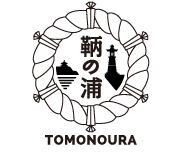According to several poetries on the Manyoshu which is the oldest Japanese poetry, Tomonoura, located just the middle of the Seto Inland Sea, is regarded as the important hub port during Nara Period.
Since 1630s, Tomonoura has been called as “Tomonotsu” as it has been characterized as the port city more strongly. As well as the Kitamae ship operating between Hokkaido and Osaka, the Korean envoys and the feudal lords in the West, the Dutch Commerce Director, the Ryukyuan Envoy, etc, also visited Tomonotsu which contributed to make Tomonoura both the prosperous port city and the commercial city.
Historical townscape is well conserved in Tomonoura, the port town of which is the one and only place where we can still check out a complete five set of the harbor facilities of the Edo Period intact, consisting of “jyoya-to”(all-night lighthouse), “gangi”(stair-like landing area), “hatoba”(wharf), “tadeba”(old dock) and “funa-bansho”(old coast guard station).
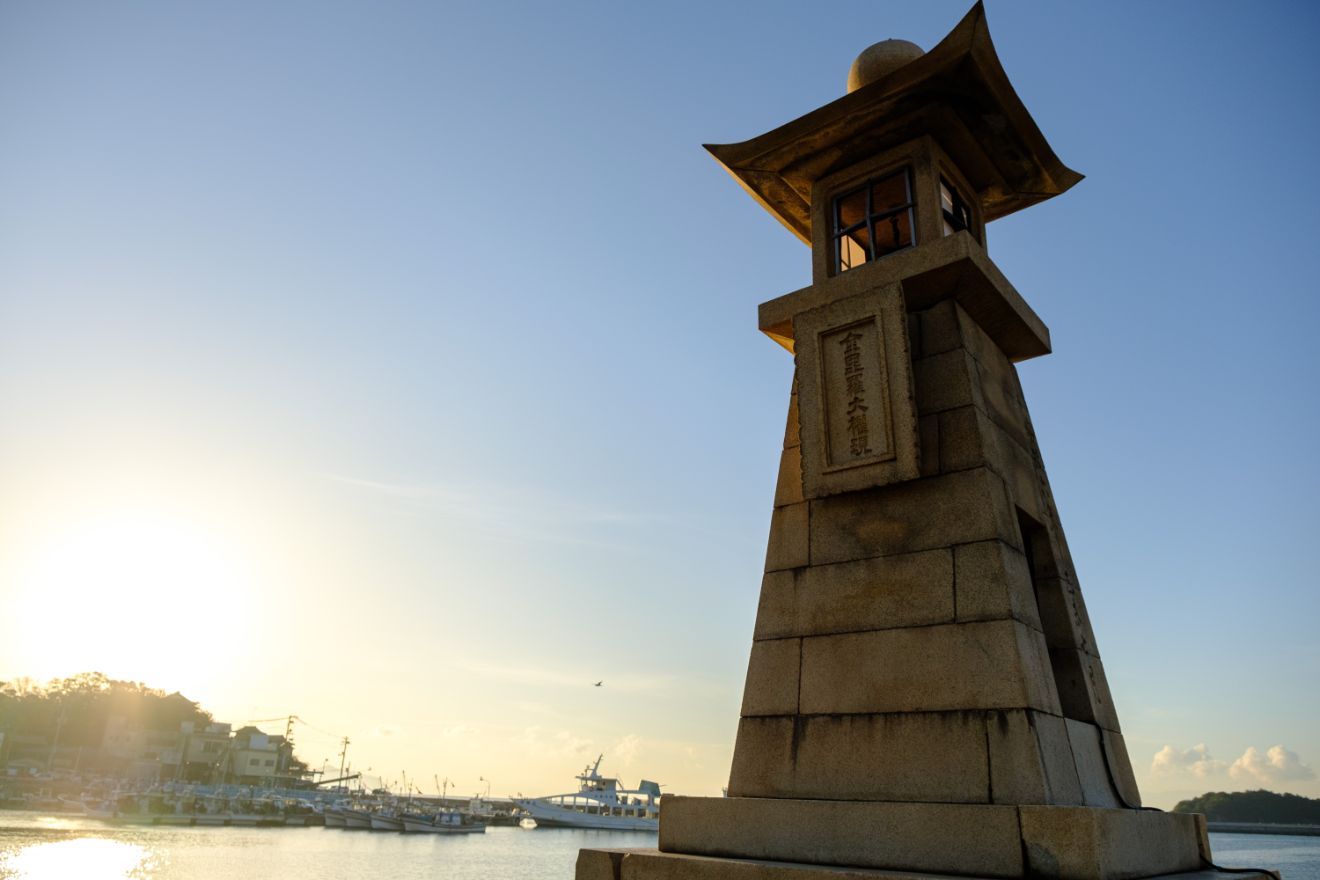
Joya-to lighthouse, Tomonoura’s symbolic icon of all times
Check out the symbol of Tomonoura of all times – “joya-to”, so as called “Touro-do” affectionately among locals, regarded one of Japan’s biggest all-night lighthouse which has been preserved in the port since Edo Period. It is built on the turtle’s berry shaped masonry hidden in the sea, its height exceeds 10 meters if it includes.
The establishment date is marked in Japanese old letter on the west side of the rod to tell us that the lighthouse was constructed in 1859. We guess that travelers would have felt secured when they saw this light a far from the dark sea.
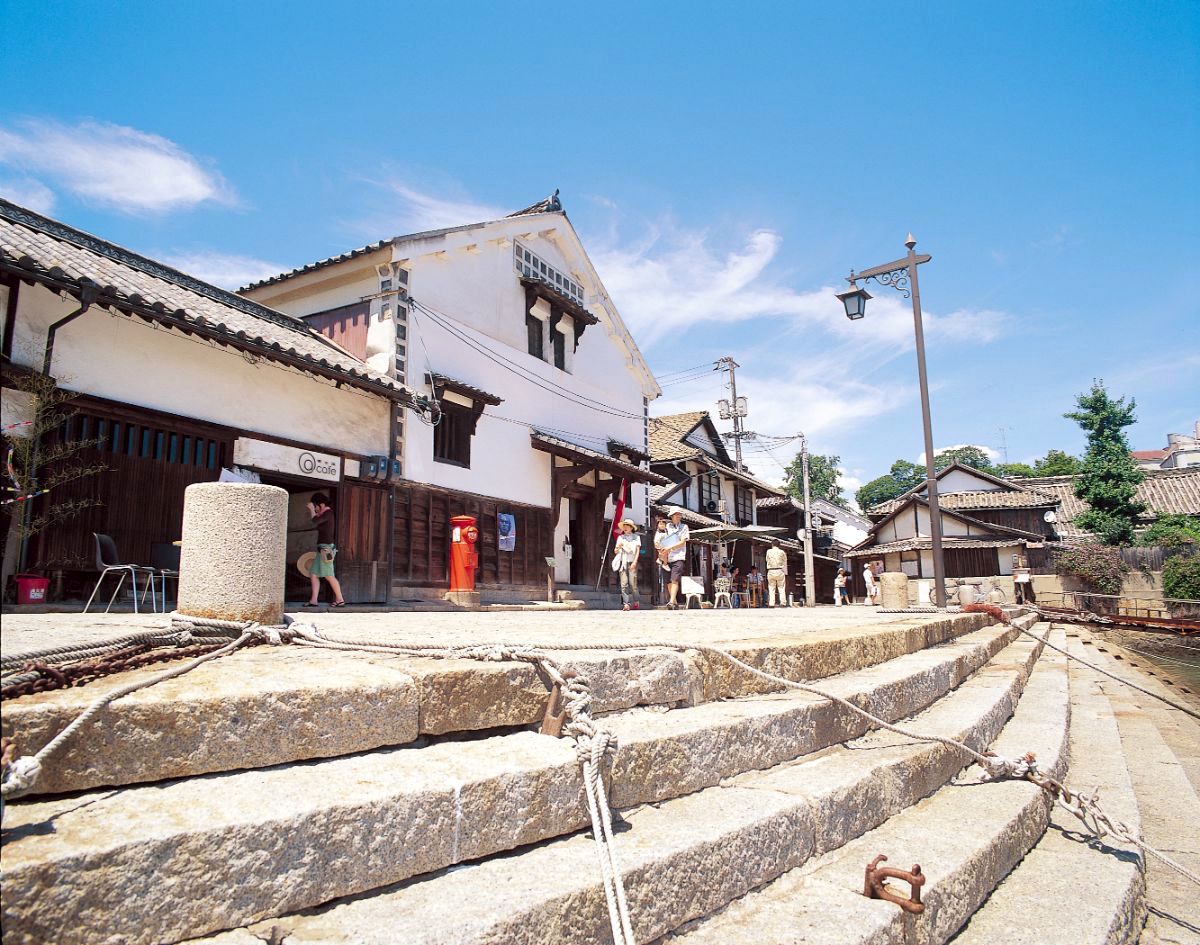
Gangi – the trading gateway home and abroad
“Gangi” refers to a stair-like landing area from sea to land. Surrounded by Tomo port, Tomonoura’s gangi marks one of the largest one made by stone in Japan with about 150 meter long and 24 stone stairs.
According to the literature, the boatship was created in the early Edo period, but it was buried around 1950s. The current gangi is actually “Hama no oogangi” established in 1811, in other words it is called as Houmeishu-hama-oogangi, or Wakudehama-oogangi. This gangi is still used as a boatship, let’s have a leisurely time by having a seat on that.
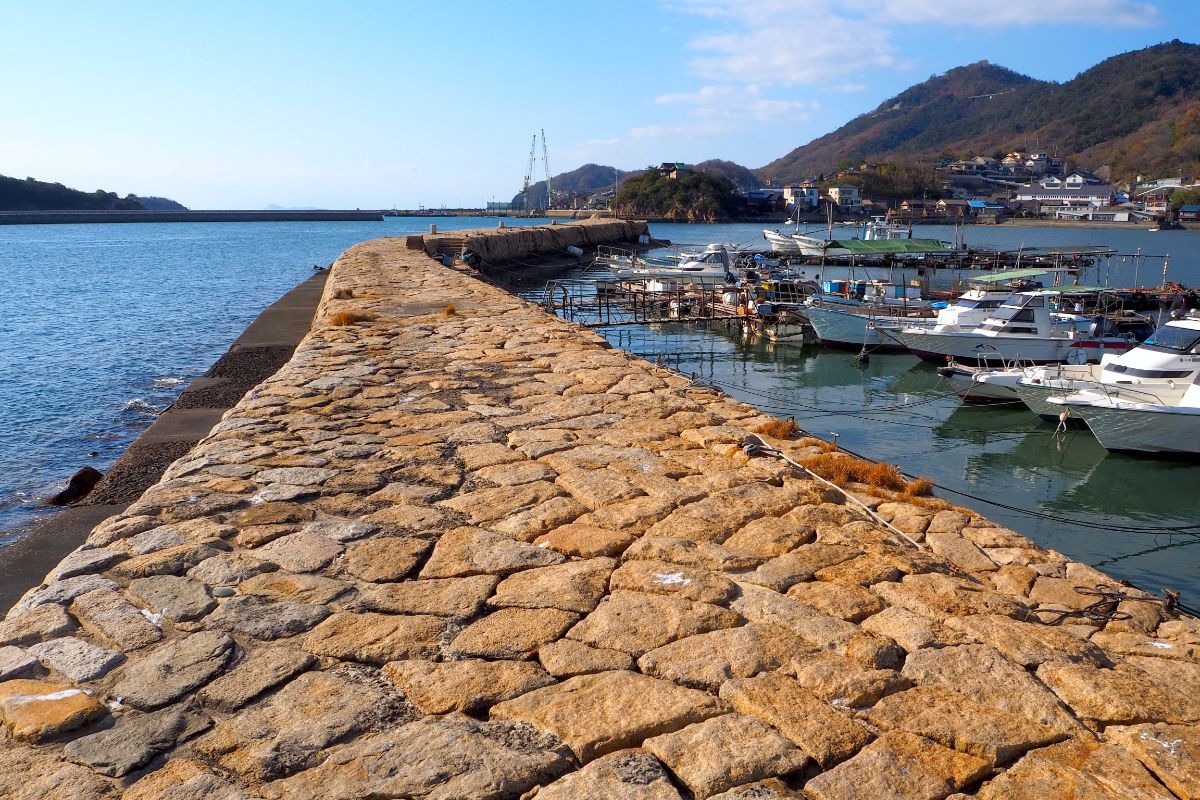
Hatoba – Stone wharfs of the sea which opens their arms to hold Tomonotsu
“Hato” , or Hatoba in other words, means the wharf installed in the sea to protect the ships against heavy winds like typhoons as well as high waves.
At Tomonoura, we can still witness the stone wharfs constructed dating back to Edo Period, three wharfs which include one at Okawashima on the east side of Tomo bay, other at Yodohime Shrine on the west side, finally one close to Tamatsushima Island on the south side, look as if they are stretching their arms to hold the whole Tomonoura warmly. This stone wharfs are one of the biggest one in Japan, making us understand how important the port of Tomonoura was.
This scenery with the long wharf made by stone floating on the calm sea looks very symbolic one as Seto Insland Sea, why don’t you extend your walk to the edge of it?
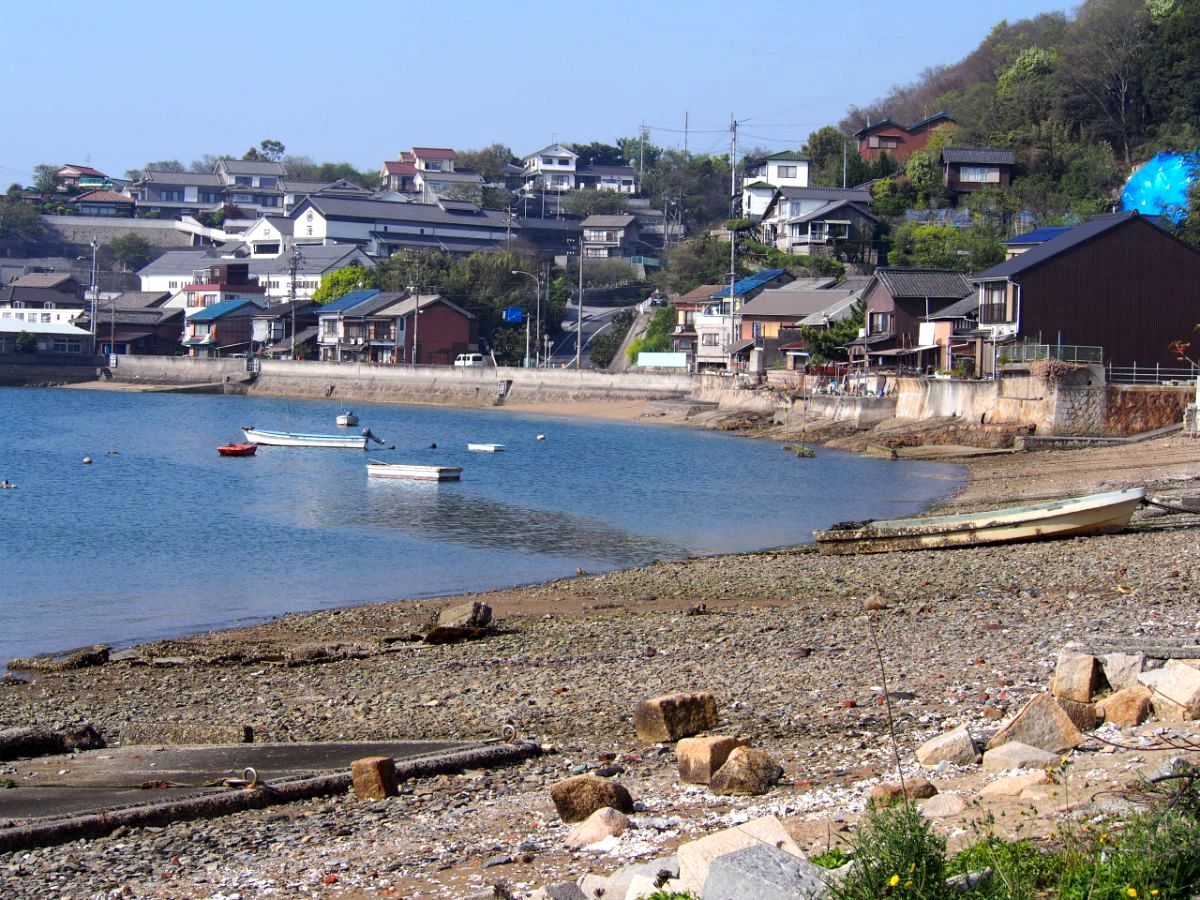
Tadeba ruins – A lively (old dock) among ship carpenter on which ship maintenance and repair were performed
As wooden ships are easy to get attached to shellfish such as acorn barnacles and oysters such and seaweed, it is necessary to have the bottom of the ship get baked and dried. This process is called “Taderu”, and the place to do it is named as “Tadeba”.
As there are many ship carpenters and it was known as a production place for the ship nail in Tomonoura, the locals often repaired the ship here at tadeba.
At that time, Tomonoura had worked for many clients overseas as an international port town, it was so important to welcome the global ships to land at the Tomo port.
As a result, it seems that they have already had Tadeba well maintained by having it caved at sandpits and the surface of rocks as a place to repair and land ships. There are also records that about 900 boat vessels were coming at Tadeba annually around in 1800. Today we can still visit Tadeba at the west side of the Tomo port where is the place to get connected with boats, making us imagine the time what was very flourished.
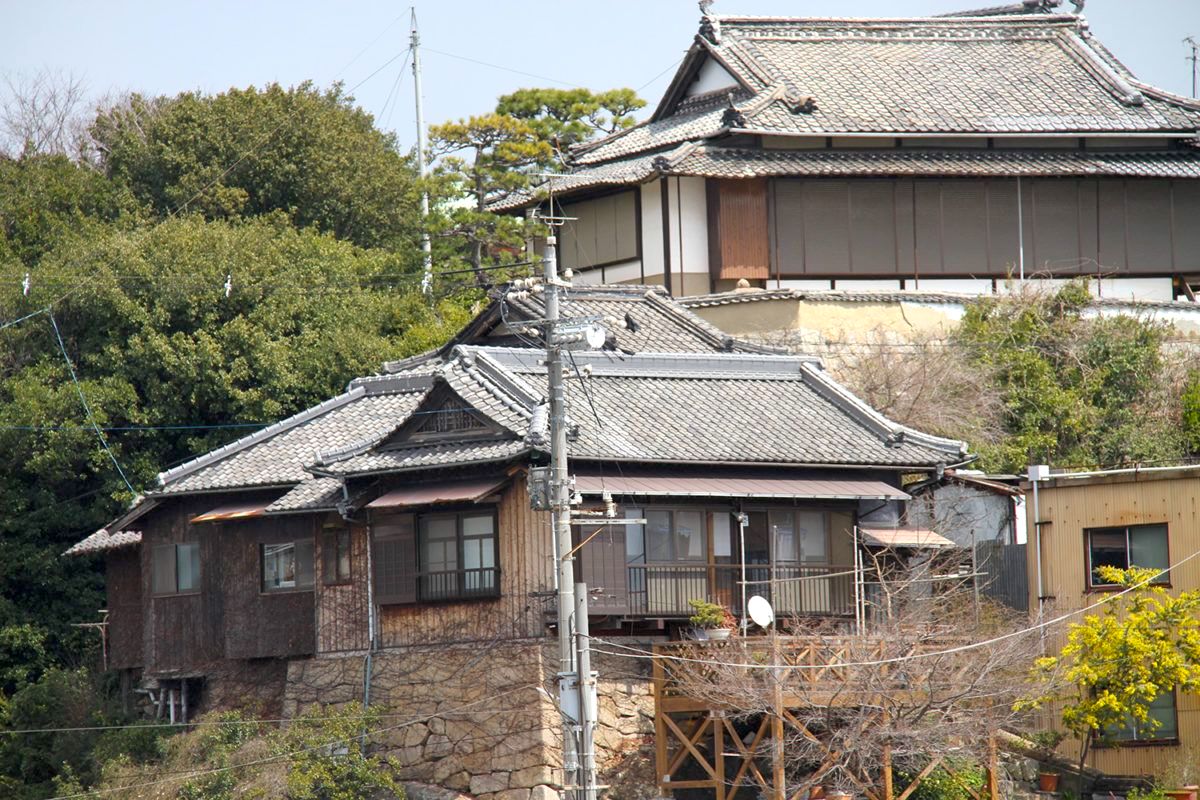
Funa-bansho ruins – A guard station to protect the safety of the sea and the town
“Funa-bansho” means a place to crack down on ships entering and leaving the port and to monitor its safety, also called as “Toomi-bansho”.
Tomonoura’s Funa-bansho was built on stonewalls of Taigajima (It is currently reclaimed and landed) at the eastern tip of the port in the early Edo Period.
The current building was rebuilt around 1950s, but stonewalls below it was actually built up in the Edo era. There was a bell tower near the site, and it seems that it was used as a hour bell as well as an alarm bell upon any emergency occurred.
